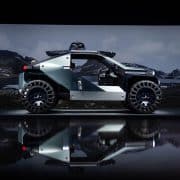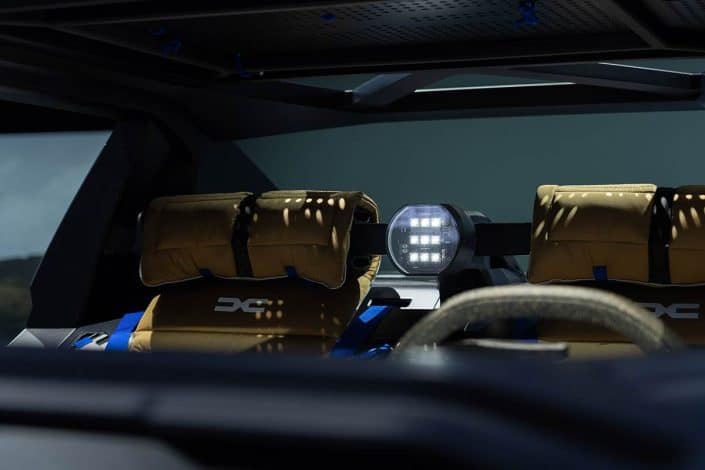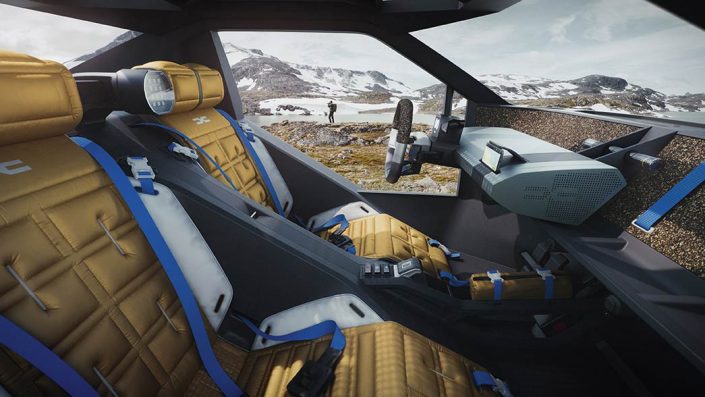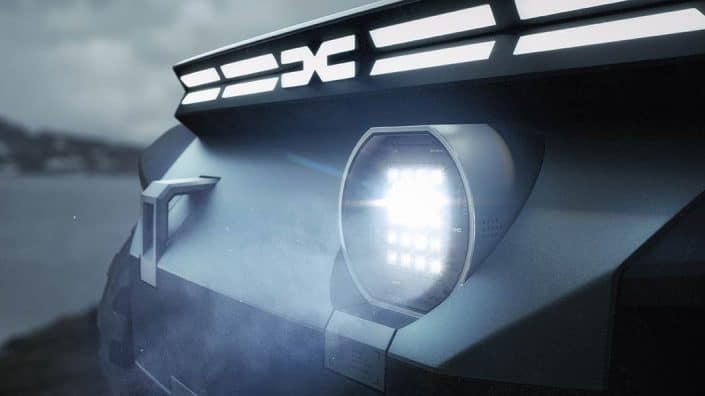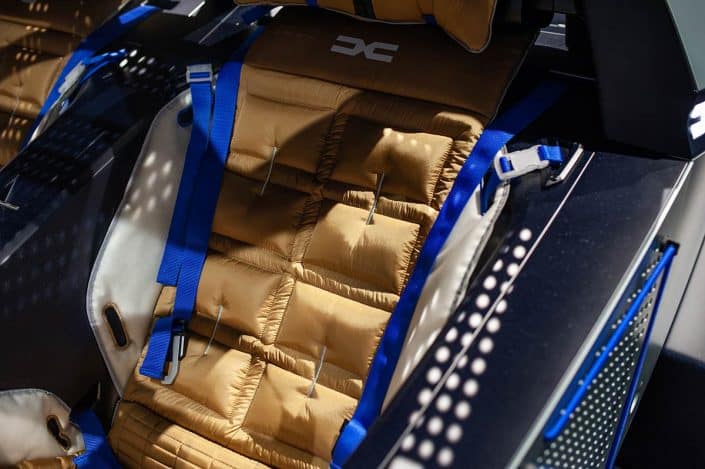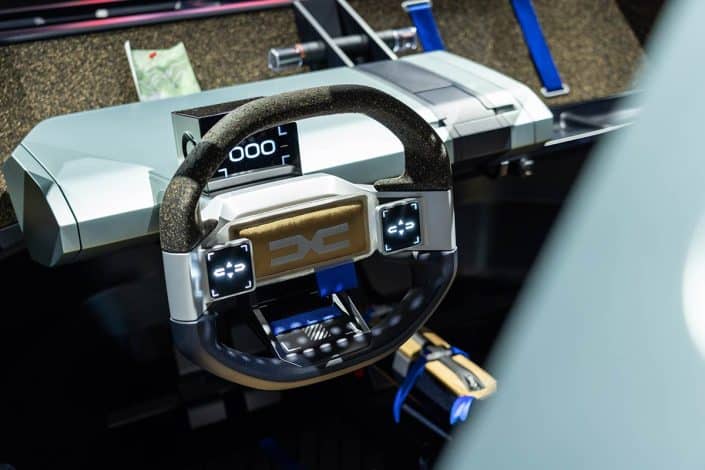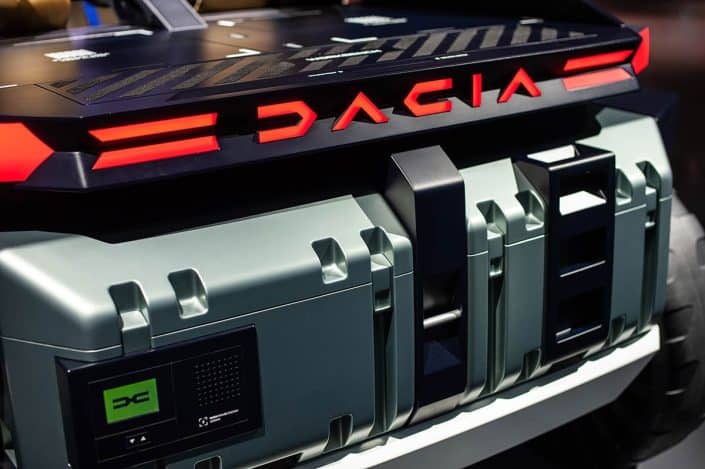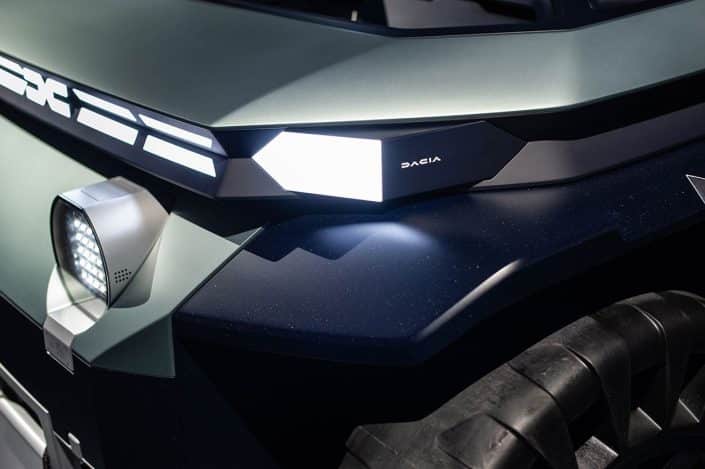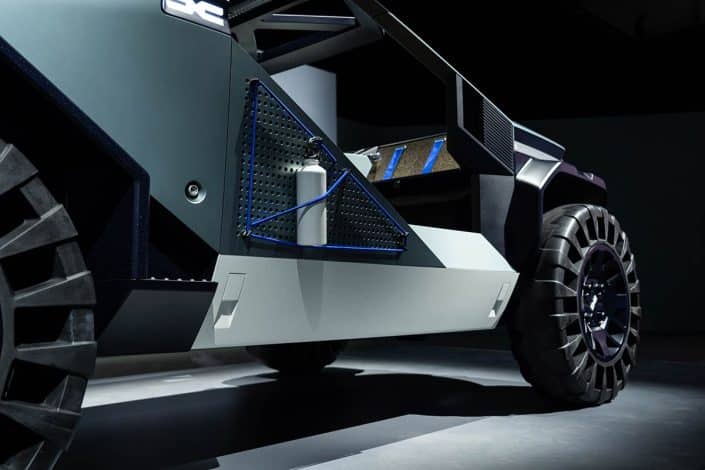Manifiesto: El Living Lab de Dacia
- Manifesto es un concept car que encarna y reafirma los valores que representa la marca Dacia
- Es esencial pero fresco, robusto, construido para actividades al aire libre y eficiente desde el punto de vista económico y ambiental.
- Manifesto Concept es un laboratorio de ideas con algunas de sus características pioneras que mejoran los futuros automóviles de producción Dacia.
Con la revelación de Manifesto Concept, Dacia reafirma enfáticamente su visión inigualable de un automóvil esencial, moderno, robusto, asequible y ambientalmente eficiente. Aunque no prefigura un próximo modelo, Manifesto es un laboratorio de ideas con algunas de sus características innovadoras disponibles en futuros vehículos de la gama Dacia.
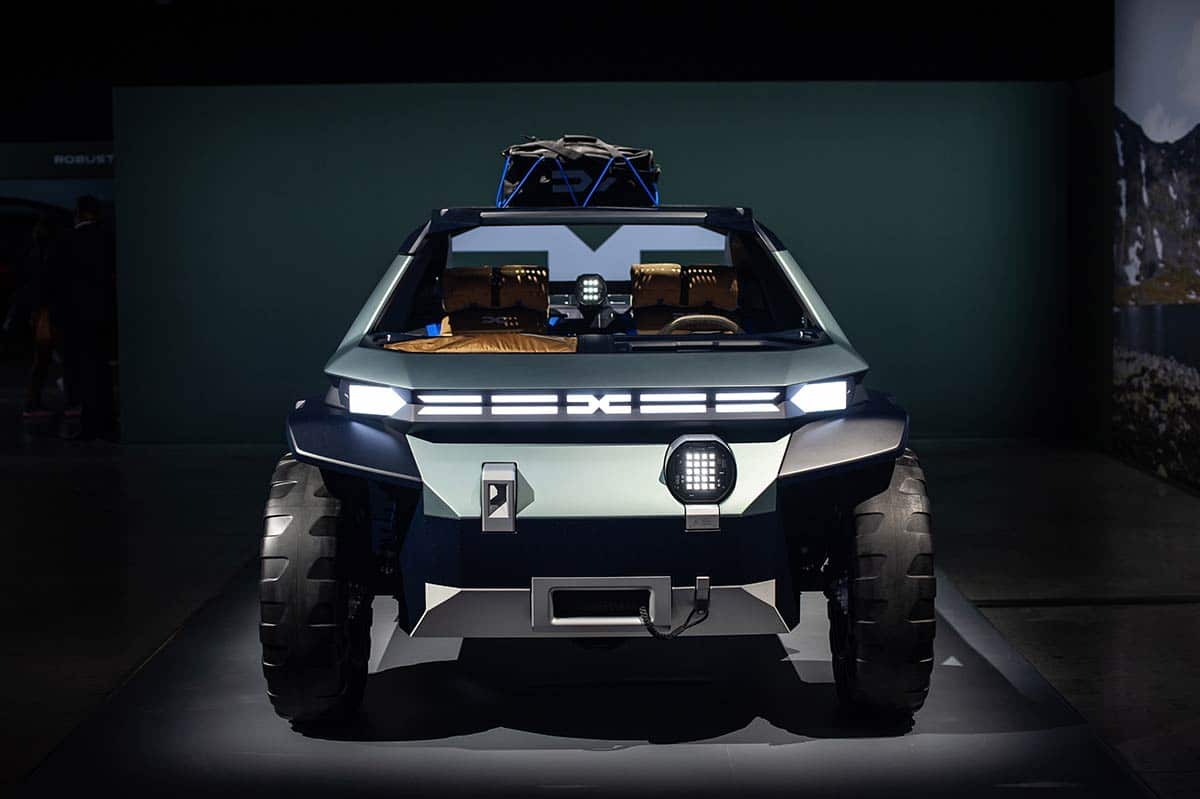 Manifesto explora una conexión con la naturaleza al ser respetuoso con el medio ambiente, robusto y al demostrar su utilidad al aire libre. Es una declaración audaz sobre el objetivo de la marca de apoyar a los clientes a medida que se vuelven cada vez más entusiastas de probar actividades al aire libre, al tiempo que amplían los valores y cualidades que han ayudado a construir el éxito de Dacia.
Manifesto explora una conexión con la naturaleza al ser respetuoso con el medio ambiente, robusto y al demostrar su utilidad al aire libre. Es una declaración audaz sobre el objetivo de la marca de apoyar a los clientes a medida que se vuelven cada vez más entusiastas de probar actividades al aire libre, al tiempo que amplían los valores y cualidades que han ayudado a construir el éxito de Dacia.
ESENCIAL PERO FRESCO
Manifesto Concept está redefiniendo lo esencial, ofreciendo una experiencia cada vez más simple y genuina. No hay barreras entre los pasajeros y el entorno: ni puertas, ni ventanas, ni parabrisas. Por lo tanto, el conductor y el pasajero están completamente inmersos en la naturaleza. Mientras se prepara para sus actividades al aire libre, no hay nada tan conveniente como una superficie de trabajo resistente que sirve para una variedad de propósitos en lugar de una puerta trasera.
Los pasajeros también pueden estar cerca de la naturaleza y, al mismo tiempo, permanecer conectados con los servicios disponibles en su teléfono inteligente: el enfoque simple, eficaz y económico de traer su propio dispositivo de Dacia hace posible integrar completamente un teléfono inteligente en el tablero y en el ordenador de a bordo Este ingenioso sistema ya está disponible en varios de los modelos actuales de la marca y evolucionará en el futuro de lujo.
Manifesto Concept demuestra otra pieza del pensamiento inteligente de Dacia con YouClip, un sistema muy simple para asegurar una variedad de accesorios prácticos y modulares. Esta idea pionera se integrará en los futuros modelos Dacia.
Por último, dado que lo genial a menudo se superpone con lo útil en Dacia, Manifesto ofrece un solo faro: ¿por qué usar dos si uno proporciona toda la luz que necesita? ¡Esto también se puede desmontar para usarlo como una potente linterna!
ROBUSTO Y DISEÑADO PARA ACTIVIDADES AL AIRE LIBRE
Los autos Dacia son famosos por ser robustos y confiables. Duster, Jogger y Sandero Stepway se destacan como autos con los que los clientes pueden contar para sus actividades al aire libre. Manifesto Concept empuja los límites aún más, convirtiendo un automóvil en un intermediario al conectar a las personas y la naturaleza.
Manifesto Concept viene con todas las características todoterreno, incluida la tracción en las 4 ruedas, una altura de manejo muy generosa, ruedas grandes y una carrocería construida para resistir los terrenos más difíciles.
Es resistente al agua: se puede limpiar el interior con un chorro de agua.
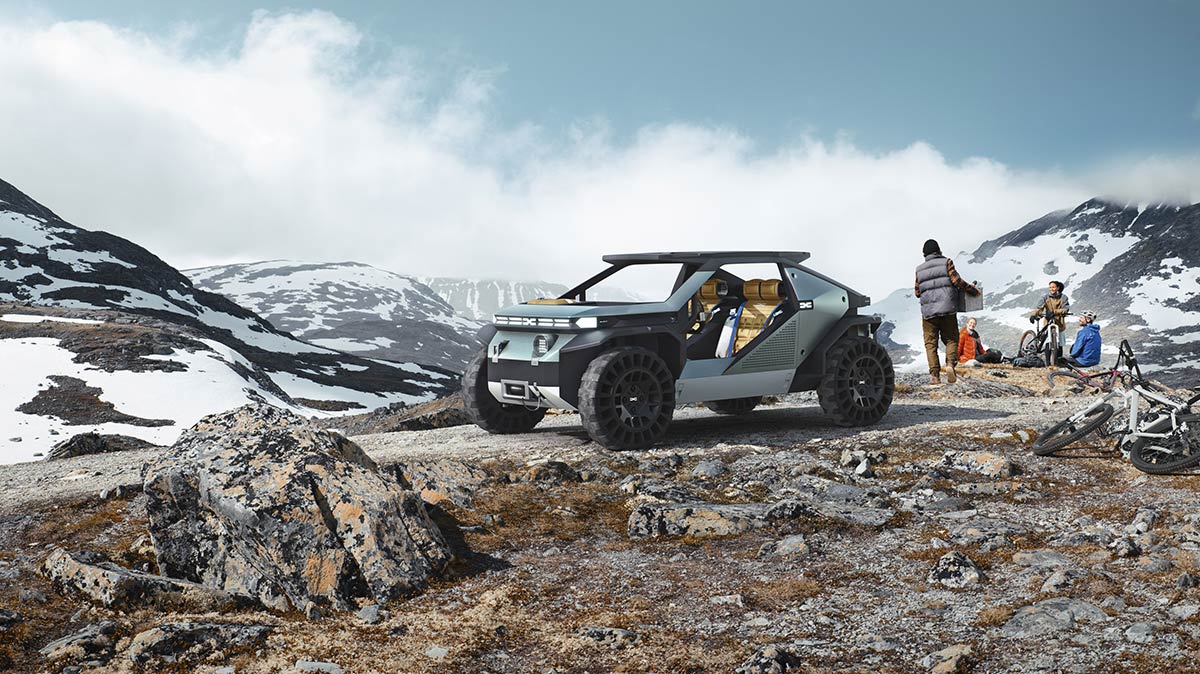
Además, los tapizados desmontables de los asientos se convierten en sacos de dormir en segundos.
Para mayor practicidad, el portaequipajes de techo puede transportar todo tipo de cargas, ya que las barras de transporte pueden cambiar a una variedad de configuraciones. Dacia ya ha demostrado excelencia en esta área con barras de techo modulares innovadoras disponibles en Sandero Stepway y Jogger, que pronto llegarán a Duster.
Una batería extraíble y dedicada suministra energía a través de un tomacorriente doméstico, lo que convierte a Manifesto Concept en una fuente de energía para cualquier actividad al aire libre que requiera energía.
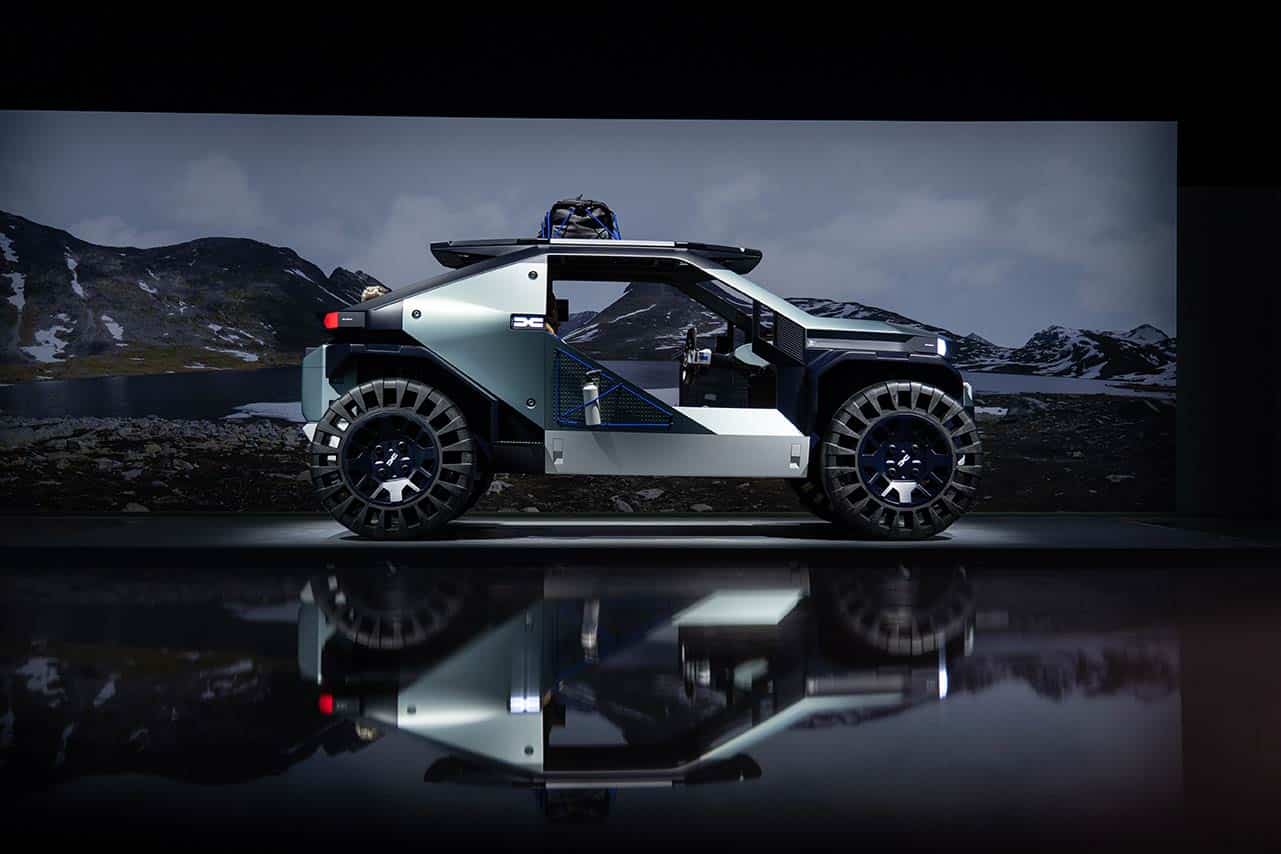
ECO-INTELIGENTE
Con Manifesto Concept, la marca muestra con orgullo su visión de un vehículo con una huella ambiental mínima. Al ser compacto y ligero, consume menos energía. Esta búsqueda de la eficiencia se remonta a mucho tiempo atrás en la gama Dacia: el Jogger, por ejemplo, es 300 kg más ligero que sus rivales de 7 plazas.
Las principales partes plásticas de la carrocería de Manifesto Concept contienen una porción significativa de material reciclado. Llamado Starkle®, está hecho de polipropileno ya procesado, con un efecto jaspeado.
El interior está equipado con materiales naturales como el corcho que cubre el salpicadero. Al igual que con los últimos modelos de Dacia, el cromado decorativo se ha ido.
El concepto de neumáticos sin aire es otra característica innovadora, ya que su objetivo es el respeto por el medio ambiente y el ahorro. El principio subyacente es la durabilidad, ya que los neumáticos son a prueba de pinchazos y duran tanto como el vehículo.
Al comentar sobre Manifesto, David Durand, director de diseño de Dacia, dijo: “En Dacia, nos gusta mantenerlo real. A medida que desarrollábamos y explorábamos nuevas ideas, sentimos que necesitábamos superar las simulaciones en 3D y ver cómo se ven en la vida real. Además de ser un objeto de diseño, Manifesto Concept resume nuestra visión y combina una amplia gama de innovaciones; algunas implican una implementación extrema, pero siguen siendo asequibles para los clientes. Usaremos algunos de ellos en los futuros modelos de Dacia”.
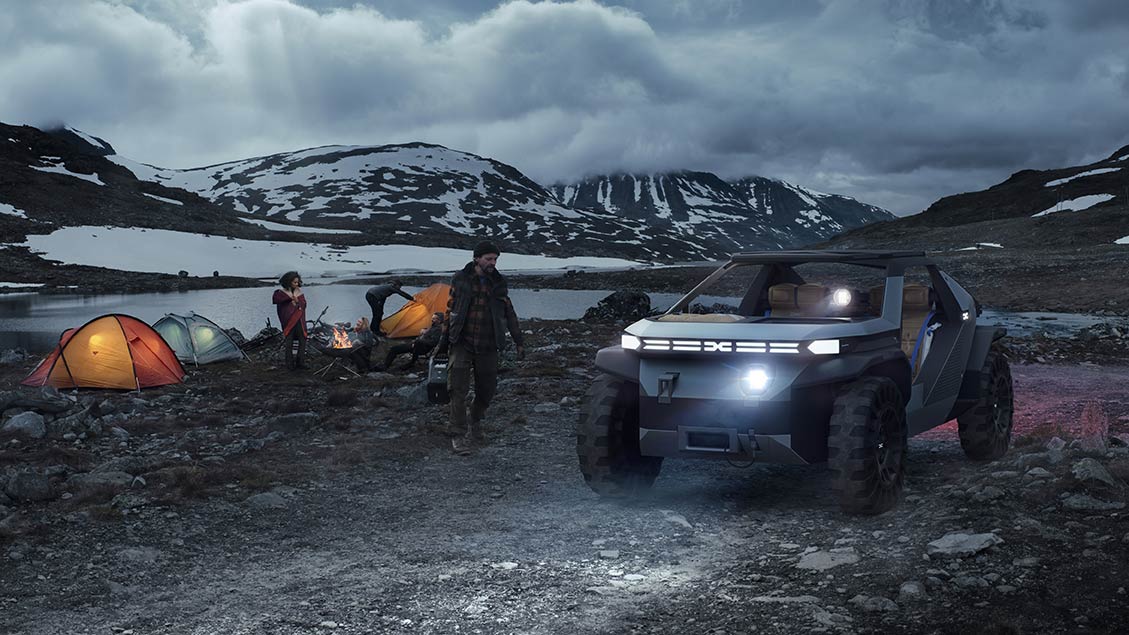
Lionel Jaillet, director de rendimiento de productos de Dacia, dijo: “Queremos crear una gama de productos que fortalezca nuestra promesa de marca, centrándonos en los elementos esenciales de lujo y adaptando nuestros vehículos para actividades al aire libre. Más allá de nuestros modelos, también estamos trabajando en características innovadoras que se ajustan aún más a las necesidades y estilos de vida de nuestros clientes. Manifesto Concept es un “laboratorio” para probar y simular nuevas ideas. ¡La versión que puedes ver hoy seguirá evolucionando a medida que sigamos explorando! Así que no te pierdas los próximos modelos: ¡serán cada vez más inteligentes, cada vez más adaptados a las actividades al aire libre y cada vez más Dacia!”.
SOBRE DACIA:
Nacido en 1968, luego relanzado por el Grupo Renault a partir de 2004 en Europa y los países mediterráneos, Dacia siempre ha ofrecido los mejores autos con la mejor relación calidad-precio al redefinir constantemente lo esencial. Como punto de inflexión, Dacia propone coches sencillos, polivalentes y fiables en sintonía con el estilo de vida de los clientes.
Los modelos de Dacia se han convertido en una referencia en el mercado, incluido Sandero, el coche minorista más vendido en Europa cada año desde 2017; Duster, el SUV más vendido para clientes minoristas europeos desde 2018; y Jogger, el automóvil familiar versátil del segmento C. Presente en 44 países, Dacia ha vendido más de 7,5 millones de vehículos desde 2004.
Dacia se lanzó en el Reino Unido en enero de 2013 y disfrutó del comienzo más exitoso para una nueva marca de automóviles en el Reino Unido. Más de 220.000 vehículos Dacia se han vendido en el Reino Unido hasta la fecha.


